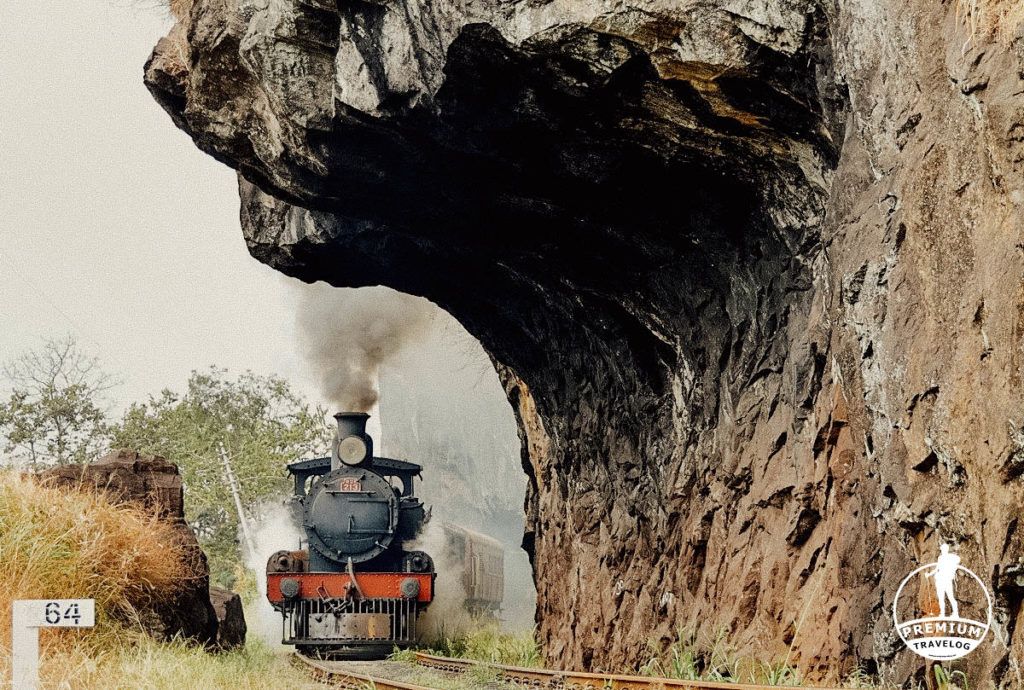
Lion’s Mouth is an overhanging rock that is found along a bend in the railway between Balana and Kadugannawa, that earned its unique name due to its resemblance to the face of lion. As the train takes the bend under the Lion’s Mouth, a steep drop into the valley below is visible as a most memorable locations – the Lion’s Mouth, a distinctive rock that overhangs the line at the Kadugannawa end of the Moragalla Tunnel.
The entrance to tunnel called the Lion’s Mouth going to Kandy
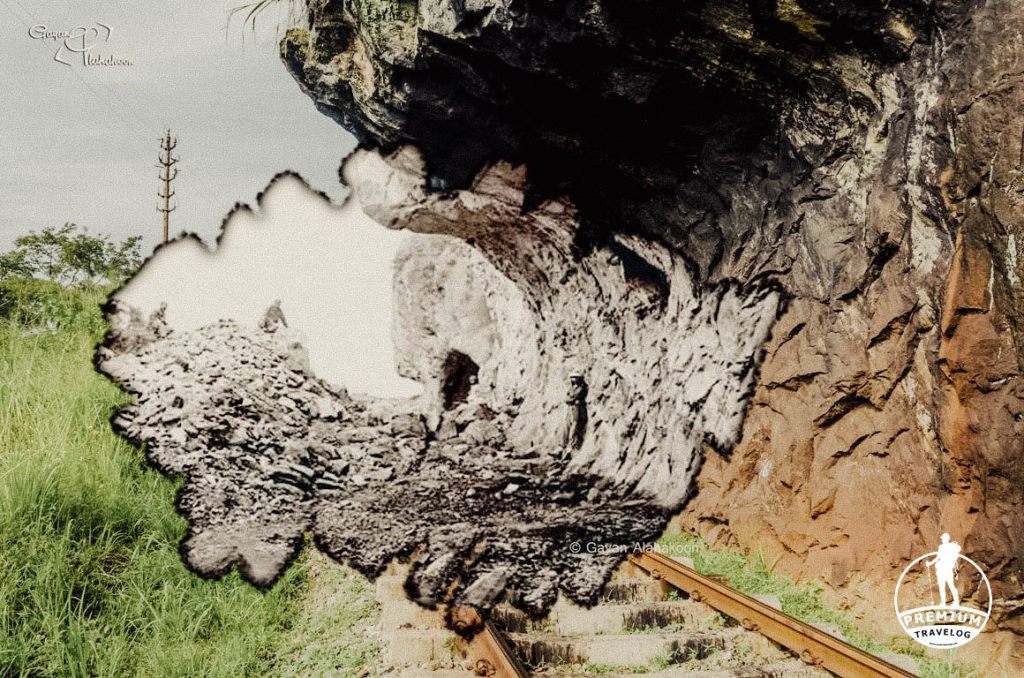
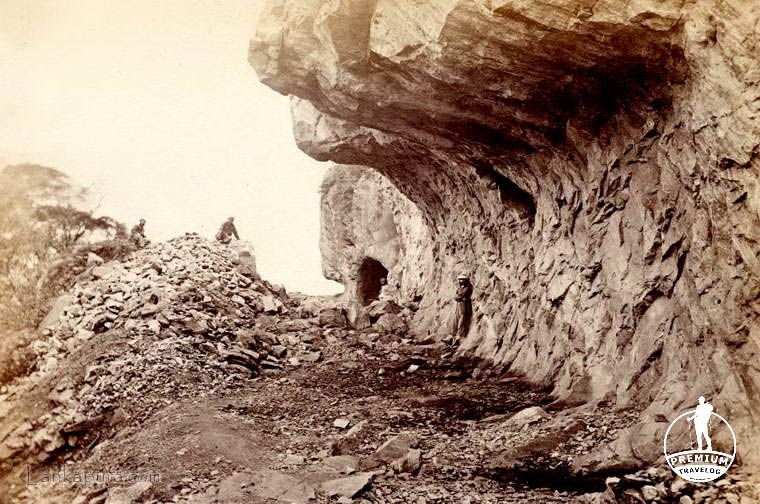
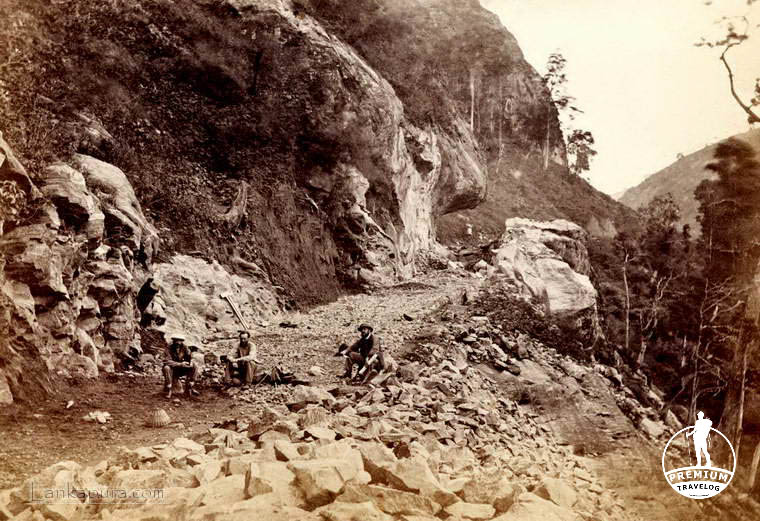
Lion’s Mouth railway tunnel on the way to Kandy, Sri Lanka, taken by an unknown photographer in the 1870s. Photography was introduced to Sri Lanka in the 1840s and by the end of the 19th century was practised extensively, both local and foreign artists recording the many facets of the beautiful island. Skeen’s firm, set up in Colombo in the1860s, comprised the most famous photographers of the 19th century in Sri Lanka, extensively documenting industry, landscape and racial types and exhibiting at major international exhibitions between 1870-1900. It also recorded the construction of the Ceylon Railways between the 1860s and 1890s. This tunnel was named after the overhanging rock shown here, which appears to resemble the open mouth of a roaring lion. The type of scenery which would have been seen on the journey from Colombo to Kandy was described thus by T H Holdich in the Imperial Gazeteer of India, ‘No measured language can express the beauties of Ceylon scenery. From Colombo to Kandy, where a lake set in the hills reflects the visions of palms and temples, and the many-coloured array of native buildings below the long slopes of the shadowing mountains…’
Source: The British Library
Gallery
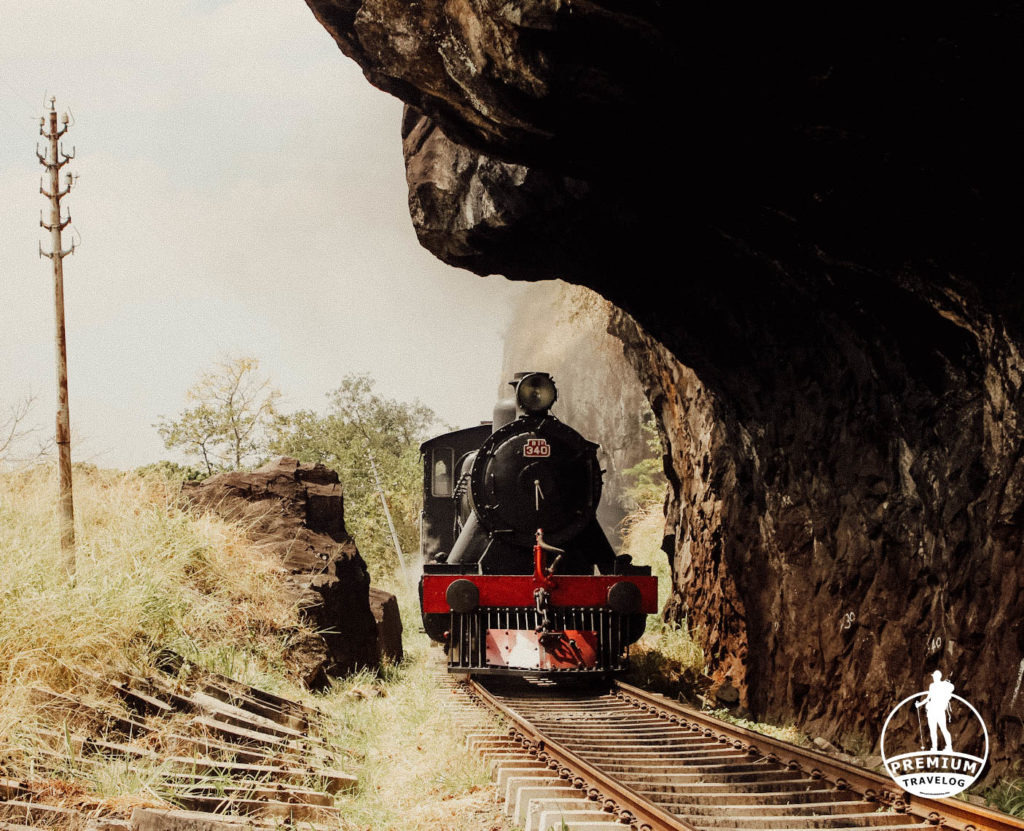
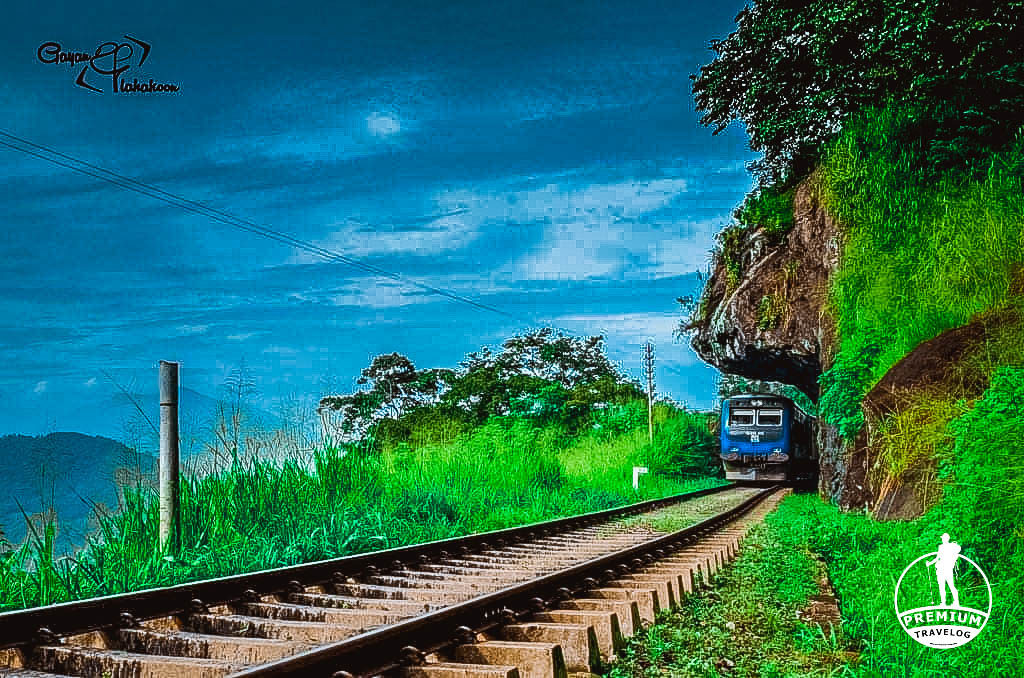
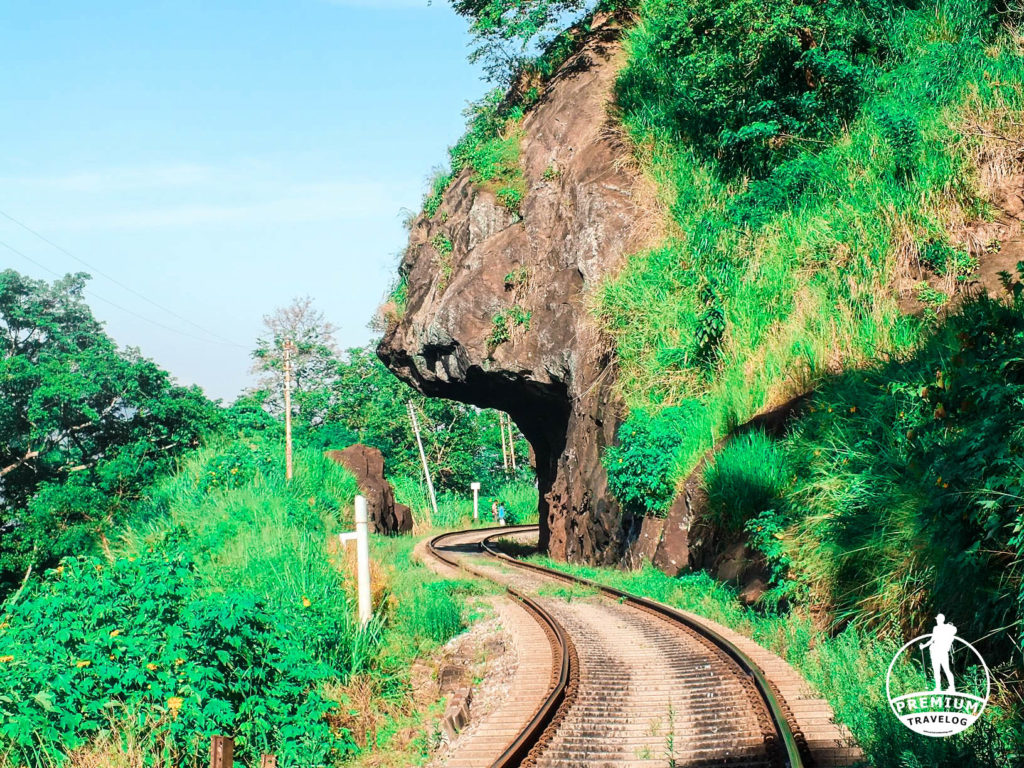
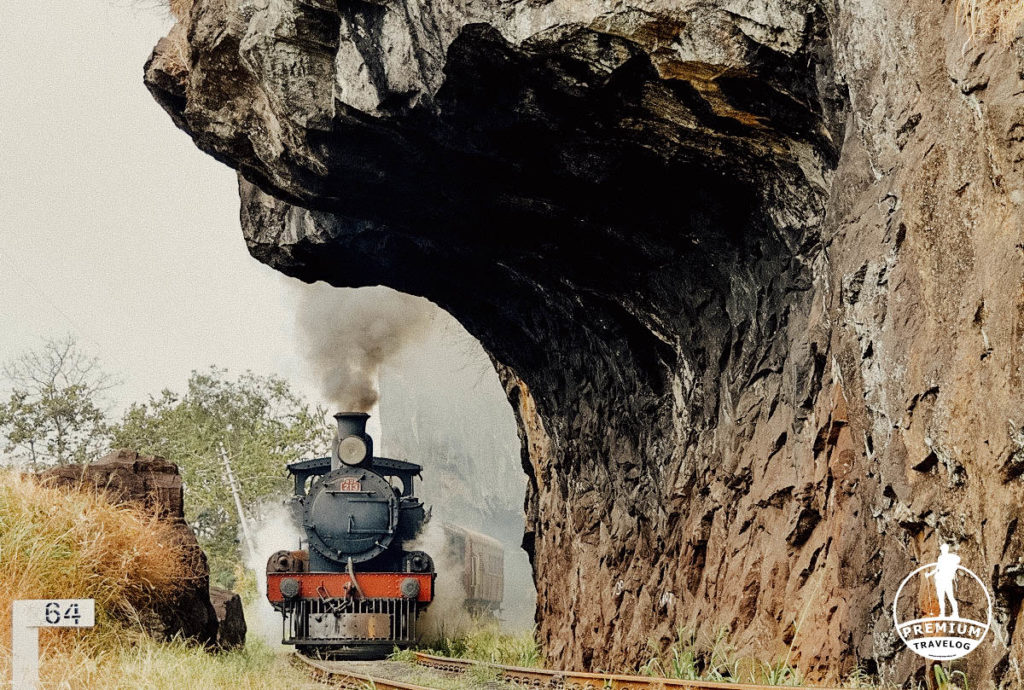
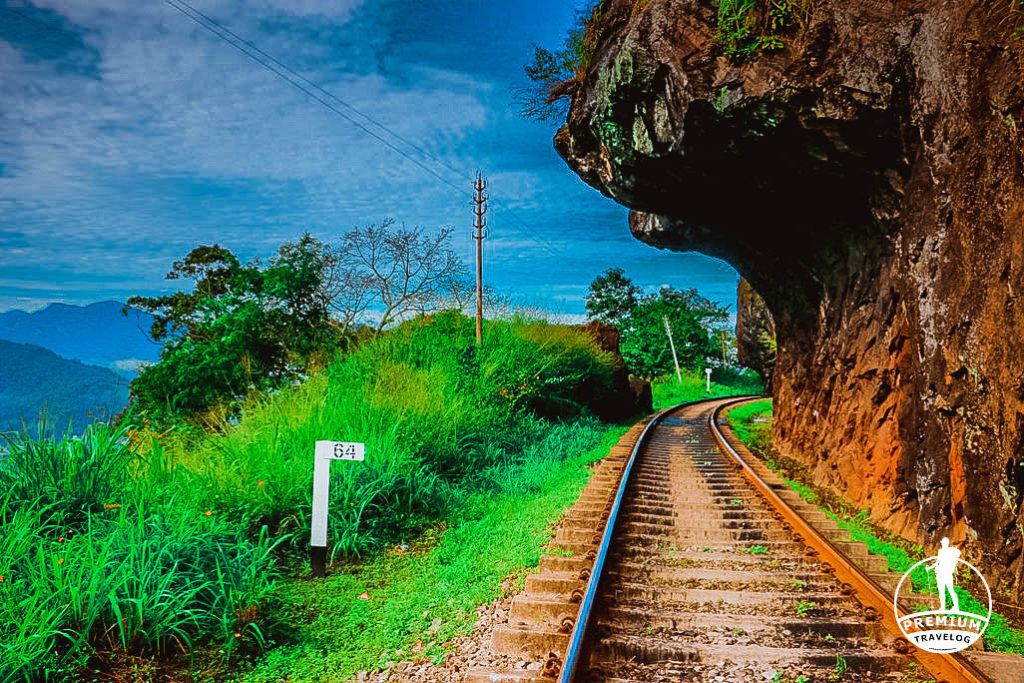
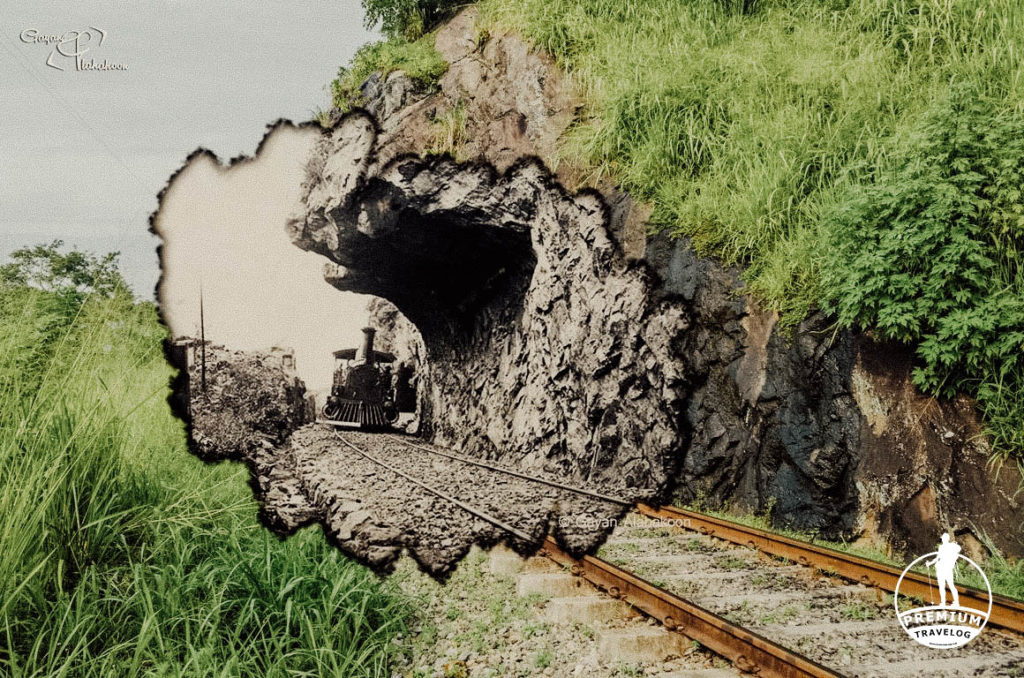

Recent Comments
Anusha
4 years ago